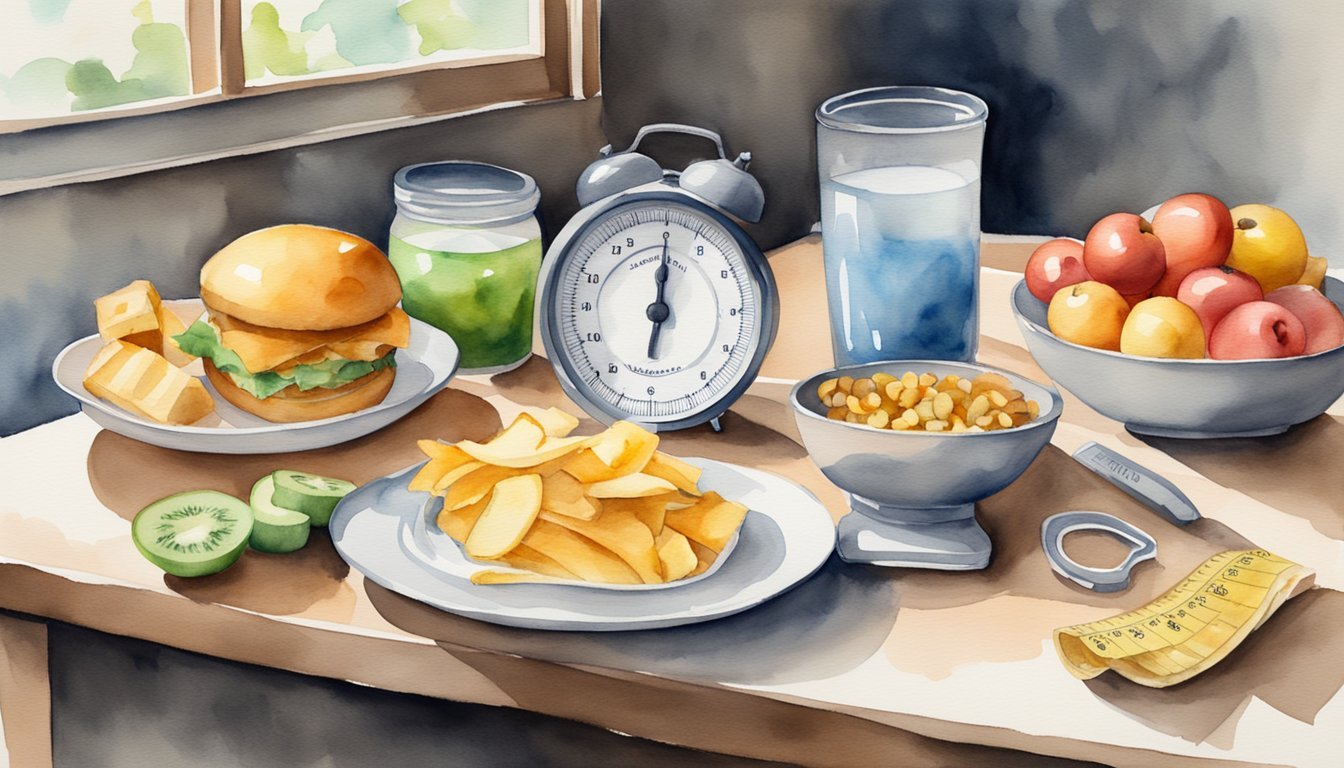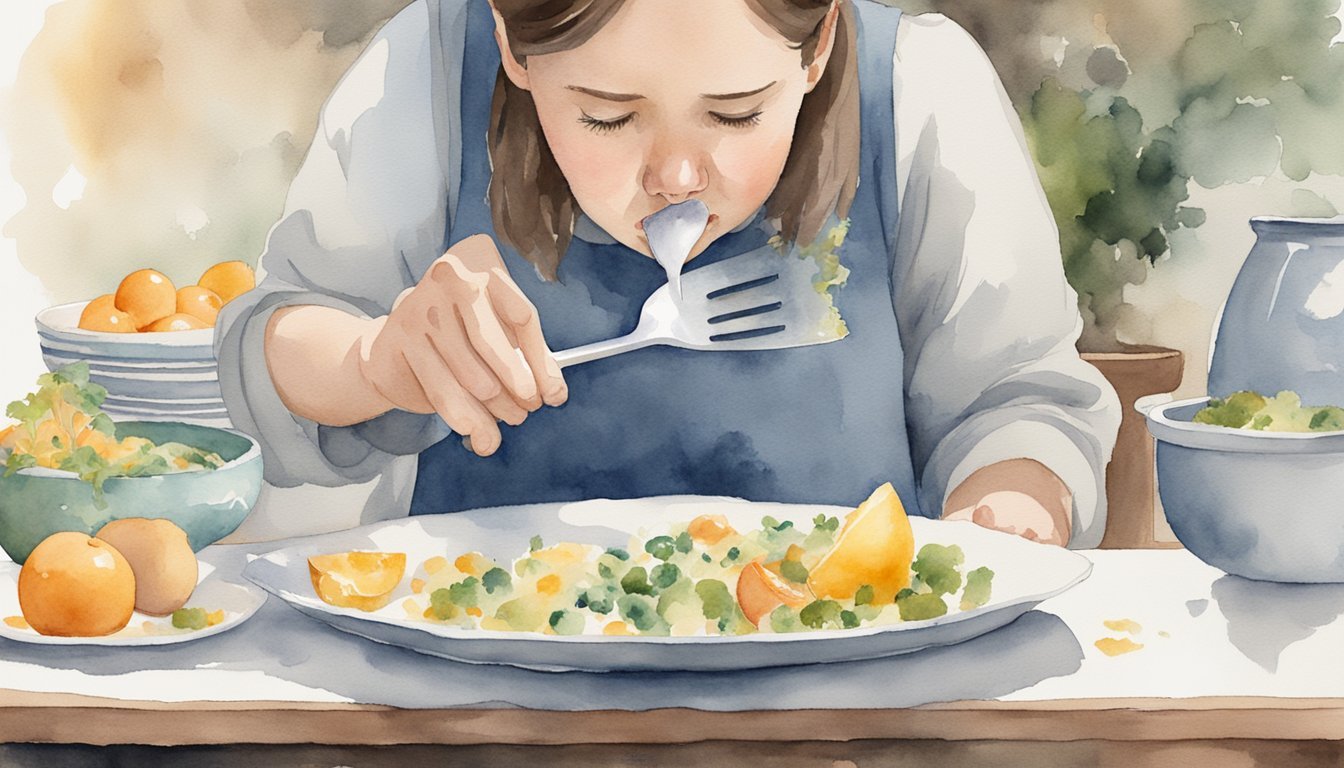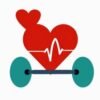8 Common Nutrition Mistakes That Sabotage Weight Loss: Avoid These Blunders Now

Are you tired of struggling to shed those extra pounds? You’re not alone.
Many people make common nutrition mistakes that sabotage their weight loss goals without even realizing it.

Knowing what these mistakes are and how to avoid them can be the key to finally achieving your dream body. From sneaky salad saboteurs to hidden calorie traps, these errors can undo all your hard work at the gym.
But don’t worry – with the right knowledge, you can steer clear of these pitfalls and fast-track your way to a slimmer, healthier you.
1) Skipping Breakfast
You might think skipping breakfast helps you cut calories, but this isn’t always true. Studies show that skipping breakfast can lead to weight gain over time.
When you skip breakfast, you may end up eating more later in the day.
This can result in a higher total calorie intake, which can hinder your weight loss efforts.
Breakfast helps kickstart your metabolism for the day.
Eating a nutritious morning meal can provide energy and help control hunger throughout the morning.
Some research suggests that skipping breakfast may be linked to insulin resistance.
This can make it harder for your body to regulate blood sugar and store fat.
A balanced breakfast doesn’t have to be complicated.
Quick options like overnight oats or smoothies can be prepared in advance and grabbed on busy mornings.
If you’re not hungry right when you wake up, it’s okay to eat a bit later.
The key is finding a routine that works for you and includes a nutritious morning meal.
Remember, everyone’s needs are different.
Pay attention to how your body feels and performs when you eat breakfast versus when you skip it.
2) Eliminating Entire Food Groups
Cutting out whole food groups can seem like a quick way to lose weight.
But this approach often backfires.
Your body needs a variety of nutrients from different foods to stay healthy.
Extreme diets that ban entire food groups can lead to nutrient gaps.
This may leave you feeling tired, cranky, and more likely to give up on your weight loss goals.
Instead of banning foods, try to eat a balanced diet.
Include fruits, vegetables, whole grains, lean proteins, and healthy fats.
This gives your body the fuel it needs to function well.
Carbs often get a bad rap, but your body needs them for energy.
Choose complex carbs like whole grains, beans, and vegetables.
These keep you full longer and provide important fiber.
Fats are another group people often try to avoid.
But some fats are good for you.
Nuts, avocados, and olive oil contain healthy fats your body needs.
Protein is crucial for muscle health and feeling full.
Don’t skip it, even if you’re trying to cut calories.
Lean meats, fish, eggs, and plant-based proteins are all good choices.
Remember, no single food is inherently bad.
It’s about balance and portion control.
Enjoying a variety of foods in the right amounts can help you lose weight without feeling deprived.
3) Drinking Sugary Beverages

Sugary drinks can sabotage your weight loss efforts.
These beverages are packed with empty calories and offer little nutritional value.
Sodas, fruit juices, and sweetened teas are major culprits.
A single can of soda can contain over 150 calories and 40 grams of sugar.
That’s a lot of extra calories with no nutritional benefit.
Even seemingly healthy options like smoothies can be problematic.
Store-bought smoothies often have added sugars and syrups.
This turns them into calorie bombs that can hinder your progress.
To avoid this mistake, opt for water as your main beverage.
It’s calorie-free and helps keep you hydrated.
If you need flavor, try adding slices of lemon or cucumber.
Unsweetened tea and coffee are also good choices.
They provide antioxidants without the extra calories.
Just be careful with added creamers and sweeteners.
If you’re craving something sweet, consider low-calorie alternatives that won’t derail your weight loss goals.
Sparkling water with a splash of fruit juice can satisfy your craving without the sugar overload.
Remember, liquid calories add up quickly.
By cutting out sugary drinks, you can significantly reduce your daily calorie intake and boost your weight loss efforts.
4) Overeating Healthy Foods

Eating nutritious foods is great for your health.
But even healthy options can lead to weight gain if you eat too much.
Many people make the mistake of thinking they can eat unlimited amounts of “good” foods.
Nuts are a prime example.
They’re packed with nutrients, but also high in calories.
A small handful is perfect, but it’s easy to munch through way more without realizing.
The same goes for avocados, olive oil, and whole grains.
These are all nutritious choices.
Yet eating oversized portions can add up fast calorie-wise.
Fruit is another tricky one.
It’s full of vitamins and fiber.
But some fruits are higher in sugar and calories than others.
Eating multiple servings of high-calorie fruits daily can slow your weight loss.
To avoid this pitfall, pay attention to portion sizes.
Use measuring tools at first to gauge proper amounts.
Over time, you’ll get better at eyeballing correct portions.
Try tracking your food intake for a week.
You might be surprised how quickly calories from healthy foods add up.
Being aware of your total daily intake is key for weight management.
Remember, calories still count – even from nutritious sources.
Enjoy a variety of healthy foods, but keep portions in check.
This balanced approach will support your weight loss goals.
5) Ignoring Portion Sizes

Paying attention to portion sizes is key for weight loss success.
Many people underestimate how much they’re eating, which can lead to consuming excess calories.
Using smaller plates and bowls can help control portions.
This simple trick makes servings look bigger and more satisfying.
Measuring food is important, especially for calorie-dense items like nuts, oils, and nut butters.
A food scale or measuring cups can be helpful tools.
Restaurant portions are often much larger than needed.
Consider splitting meals with a friend or taking half home for later.
Learning to eyeball proper portion sizes takes practice.
A serving of meat should be about the size of your palm.
A portion of grains or pasta is roughly the size of your fist.
Eating slowly and mindfully can help you feel satisfied with less food.
Put your fork down between bites and take time to really taste and enjoy your meal.
Filling half your plate with vegetables is a great way to control portions of higher-calorie foods.
Veggies are low in calories but high in nutrients and fiber.
Remember, you don’t have to clean your plate.
It’s okay to stop eating when you feel satisfied, even if there’s still food left.
6) Eating Processed Low-Fat Foods

Many people think low-fat foods help with weight loss.
But this isn’t always true.
Processed low-fat foods can be a problem.
These foods often have extra sugar or artificial ingredients.
They make up for the missing fat taste.
This can lead to more calories, not less.
Your body needs some fat to feel full.
Without it, you might eat more. Healthy fats help you absorb vitamins and stay satisfied.
Instead of processed low-fat foods, try whole foods.
Nuts, avocados, and olive oil are good choices.
They have fats that are good for you.
Watch out for “low-fat” labels on snacks and desserts.
These often trick you into eating more.
A small amount of regular food might be better.
Remember, not all fats are bad.
Your body needs them for important jobs.
Focus on eating real, whole foods instead of processed low-fat options.
When shopping, read labels carefully.
Look for foods with natural ingredients.
Avoid those with long lists of things you can’t pronounce.
By choosing whole foods, you give your body what it needs.
This can help you lose weight in a healthy way.
7) Not Drinking Enough Water
Water plays a key role in weight loss, but many people don’t drink enough.
Your body needs water to burn fat and keep your metabolism running smoothly.
Not drinking enough water can make you feel hungry when you’re actually just thirsty.
This may lead to overeating and extra calories.
Staying hydrated helps you feel full and eat less at meals.
It also gives you more energy for exercise and daily activities.
Aim to drink 8-10 cups of water per day.
Keep a water bottle with you and sip regularly.
Add lemon or cucumber slices if you want more flavor.
Replace sugary drinks with water.
Swapping just one soda for water each day can lead to weight loss over time.
Don’t wait until you feel thirsty to drink.
By then, you may already be mildly dehydrated.
Make drinking water a habit throughout your day.
Eating water-rich foods like fruits and vegetables can also help you stay hydrated.
Watermelon, cucumbers, and lettuce have high water content.
8) Eating Too Quickly

Eating too fast is a common habit that can sabotage your weight loss efforts.
When you eat quickly, you may consume more calories than your body needs before feeling full.
Your brain takes about 20 minutes to register feelings of fullness.
By eating slowly, you give your body time to recognize that it’s satisfied.
This can help prevent overeating and promote better portion control.
Eating too quickly can also lead to poor digestion.
When you rush through meals, you may not chew your food properly.
This can cause stomach discomfort and make it harder for your body to absorb nutrients.
To slow down your eating, try putting your fork down between bites.
Take time to savor the flavors and textures of your food.
Eating mindfully can help you enjoy your meals more and feel satisfied with smaller portions.
Drinking water between bites can also help you eat more slowly.
This simple trick can keep you hydrated and help you feel full sooner.
Try to create a relaxed eating environment.
Avoid eating while watching TV or working.
Instead, focus on your meal and the company of others if you’re dining with friends or family.
By taking your time with meals, you can improve your digestion, feel more satisfied, and better control your calorie intake.
This simple change can make a big difference in your weight loss journey.
The Role of Macronutrients
Macronutrients are key to weight loss success.
The right balance of protein, carbs, and fats can boost your metabolism and help you reach your goals.
Understanding Protein, Carbs, and Fats
Protein helps build muscle and keeps you full.
Aim for 10-35% of your calories from protein.
Good sources include lean meats, eggs, and beans.
Carbs give you energy.
They should make up 45-65% of your diet.
Choose whole grains, fruits, and veggies over refined carbs.
Fats are vital for hormone function.
Get 20-35% of calories from healthy fats like avocados, nuts, and olive oil.
Each macronutrient plays a unique role in your body. Balancing them properly is key for weight loss.
Balancing Macronutrient Intake
To lose weight, you need the right mix of macros.
Track your intake using an app or food diary.
Adjust your ratios based on your goals and activity level.
More active people may need more carbs for energy.
Don’t cut any macro too low.
This can slow your metabolism and cause cravings.
Spread your macros across meals and snacks.
This keeps your energy stable all day.
Pay attention to how you feel.
If you’re tired or hungry, you may need to tweak your macro balance.
The Importance of Consistent Eating Habits
Regular meal patterns and smart snacking choices play a big role in weight loss.
Paying attention to when and how often you eat can make a big difference in reaching your goals.
Meal Timing and Frequency
Eating at regular times each day helps control hunger and blood sugar.
Try to have 3 main meals and 1-2 small snacks.
This keeps your metabolism active and prevents overeating later.
Space your meals about 3-4 hours apart.
This gives your body time to digest and use the energy from each meal.
Skipping meals often leads to poor food choices later.
Having a consistent eating schedule helps your body know when to expect food.
This can reduce cravings and keep your energy stable all day.
Plan your meals ahead of time when possible.
This makes it easier to stick to a regular eating pattern and avoid impulsive food choices.
Avoiding Late-Night Snacking
Eating close to bedtime can mess with your sleep and digestion.
Try to finish your last meal or snack at least 2-3 hours before bed.
If you get hungry at night, choose light snacks like:
- A small piece of fruit
- A handful of nuts
- Some plain yogurt
Avoid sugary or fatty foods late at night.
These can disrupt your sleep and lead to weight gain over time.
Brush your teeth after dinner.
This signals to your body that eating time is over for the day.
If late-night eating is a habit, try distracting yourself with other activities.
Read a book, take a bath, or do some light stretching instead of snacking.
Hydration and Its Impact on Weight Loss

Drinking enough water is key for weight loss success. Staying hydrated boosts your metabolism, helping you burn more calories throughout the day.
When you’re dehydrated, your body can confuse thirst for hunger.
This may lead you to eat more than you need.
Drinking water before meals can help you feel fuller and eat less.
Aim to drink 8-10 cups of water daily.
This amount supports weight loss and overall health.
Here are some easy ways to increase your water intake:
• Carry a reusable water bottle
• Set reminders on your phone
• Add fruit slices for flavor
• Drink a glass before each meal
Water can also help flush out toxins and reduce bloating.
This may make you feel slimmer and more motivated to stick to your diet.
Remember, other drinks like coffee and tea count towards your daily fluid intake.
But plain water is best for hydration and has zero calories.
Proper hydration supports your workouts too.
When you’re well-hydrated, you can exercise longer and harder, burning more calories.
Don’t wait until you feel thirsty to drink.
By then, you’re already slightly dehydrated.
Make drinking water a habit throughout your day for the best weight loss results.
Frequently Asked Questions
People often make mistakes when trying to lose weight.
Let’s look at some common questions about diet errors and how to avoid them.
What are the most common dietary errors people make when trying to lose weight?
Skipping breakfast is a big mistake.
Your body needs fuel to start the day.
Eating breakfast helps kickstart your metabolism and can prevent overeating later.
Cutting out whole food groups is another error.
Your body needs a mix of nutrients.
Try to eat a balanced diet with healthy foods from all groups.
How can certain eating habits unintentionally undermine a diet?
Drinking sugary beverages adds lots of empty calories.
Even fruit juices can be high in sugar.
Stick to water, unsweetened tea, or black coffee instead.
Overeating healthy foods is also a problem.
Foods like nuts and avocados are good for you, but have lots of calories.
Watch your portions, even with healthy choices.
Which foods are often mistakenly consumed when attempting to lose belly fat?
Many people eat too many refined carbs when trying to slim down.
White bread, pasta, and sugary snacks can lead to belly fat.
Choose whole grains and fruits for carbs instead.
Alcohol is another culprit.
It’s high in calories and can make you eat more.
Limit alcohol if you want to lose belly fat.
How many calories should an individual aiming for weight loss consume daily?
The right number of calories depends on your size, age, and activity level.
Most women need 1200-1500 calories per day to lose weight safely.
Men usually need 1500-1800 calories.
Talk to a doctor or dietitian to find the right amount for you.
Don’t go below 1200 calories without medical advice.
Which fruits should be limited or avoided for effective weight loss?
No fruits need to be totally avoided.
But some are higher in sugar and calories.
Limit dried fruits, which are calorie-dense.
A small handful goes a long way.
Tropical fruits like mangoes and pineapples are also high in sugar.
Enjoy them in moderation.
Berries and apples are lower in calories and great choices.
Are there vegetables that are not recommended for a weight loss regimen?
All veggies can fit in a weight loss plan.
But some are higher in calories or carbs.
Starchy veggies like potatoes and corn have more calories than leafy greens.
Watch how you prepare veggies too.
Frying or adding lots of oil adds calories.
Steam, roast, or eat them raw for the lowest calorie count.






